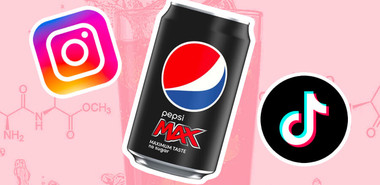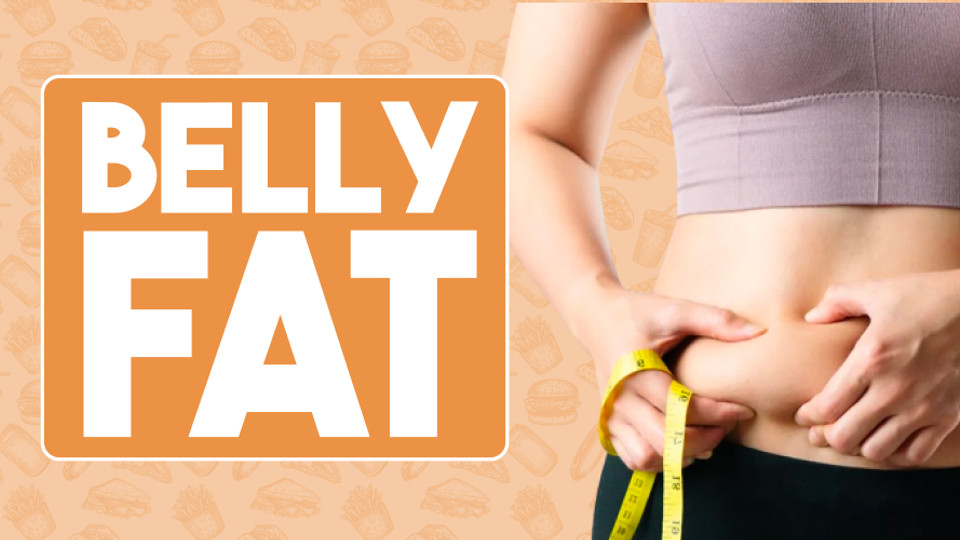
If you’ve ever been frustrated by stubborn belly fat, you’re not alone. Most of us think it’s all about what we eat, right?
It turns out belly fat is a bit more complex than simply watching what’s on our plate. From the daily stress of our busy lives to emotional factors like depression, there’s more going on under the surface than meets the eye.
I’m someone who’s been on a weight loss journey for the past year, and belly fat was one of the hardest things to lose. I’ve lost over 10kg in 9 months, and still, I have some stubborn belly fat that just won’t budge.
So I turned to the internet gods (and of course doctors and experts in the field) to figure out why I couldn’t lose my last bit of belly fat.
Here’s the thing: with my diet and lifestyle, I should theoretically be a lean, mean, fighting machine. But you know what I don’t have under control?
My stress levels.
Turns out, stress is a huge driver of stubborn belly fat.
If you’re on a weight loss journey like me and want to know what’s keeping your belly fat from melting away, read on. I’ve reviewed the research, listened to experts and found 6 causes for belly fat, and also how you can lose it for good.
1. Eating Too Many Processed Foods 🍔
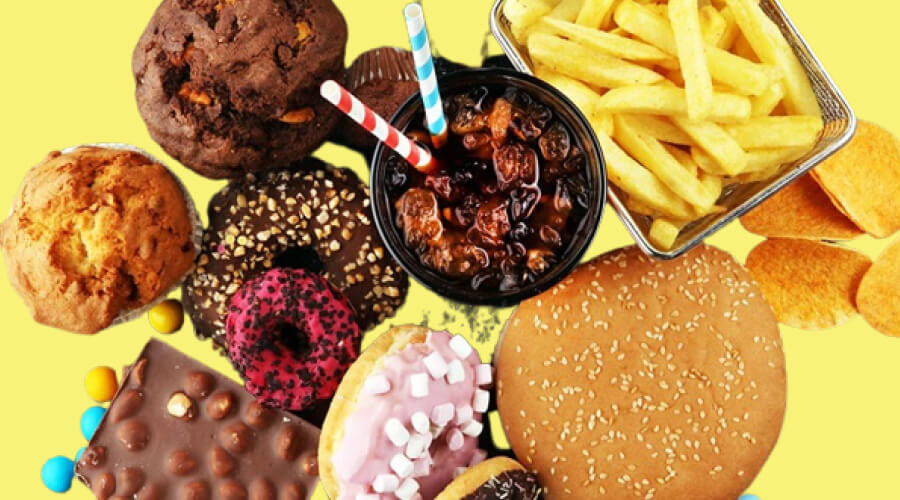
Processed foods are a common part of modern diets. There’s no denying they’re convenient and tasty, but they also often contain a huge amount of trans fats, added sugars, and artificial ingredients that contribute to subcutaneous fat and visceral fat.
A highly processed diet can lead to inflammation and an imbalance in insulin levels, hindering your body’s ability to burn fat. A healthier alternative is to choose whole, unprocessed foods rich in nutrients that support metabolism and reduce fat accumulation.
Of course, you don’t need to deprive yourself of processed foods, but if you’re serious about kicking your belly fat (both external and internal) for good, eliminating processed foods entirely will get you there faster.
2. Not Managing Stress Effectively 🫨

Stress is more than just a mental burden; it can have physical manifestations, particularly in weight management. In fact, studies show chronic stress predicts increases in visceral fat over 18 months.
Chronic stress triggers the body to release cortisol, a hormone linked to fat storage in the abdominal area. It’s essential to recognize and manage stress through techniques like mindfulness, deep breathing, or engaging in hobbies. A balanced approach to daily life can significantly aid in reducing belly fat.
3. Drinking Too Much Alcohol 🍻
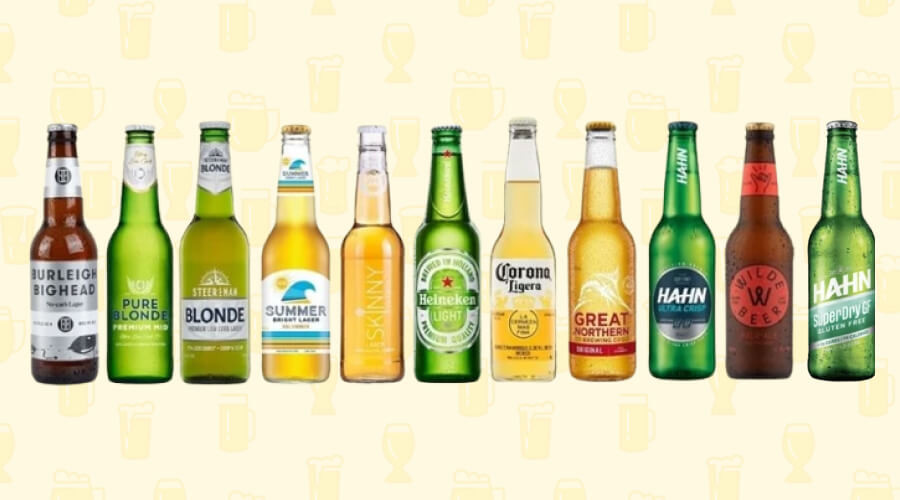
Did you know even moderate amounts of alcohol regularly can lead to an increase in visceral and subcutaneous fat? Alcohol contains calories that provide no nutritional value, potentially leading to an increased daily caloric intake. However, it’s more than just extra calories.
Your liver plays a crucial role in metabolising fats. It’s the organ responsible for breaking down fats and turning them into energy. When functioning optimally, the liver helps you maintain a healthy weight by efficiently processing fats. Alcohol can hinder liver function by disrupting its ability to break down fats. This slowdown means that instead of using fats for energy, your body might store them, leading to an accumulation of fat, particularly around the belly area.
4. Not Prioritising Quality Sleep 💤

Quality sleep is integral to overall health and well-being. Lack of sleep disrupts hormones like ghrelin and leptin, which regulate hunger and satiety, leading to increased cravings and overeating.
A five-year study found that adults under age 40 who slept five hours or less a night accumulated significantly more visceral fat. But too much isn’t good, either — young adults who slept more than eight hours also added visceral fat. This relationship wasn’t found in people over age 40.
Establishing a consistent sleep routine and prioritising around 7 hours of quality sleep per night can enhance metabolic function and support healthy weight management.
5. Poor Gut Microbiome 🦠
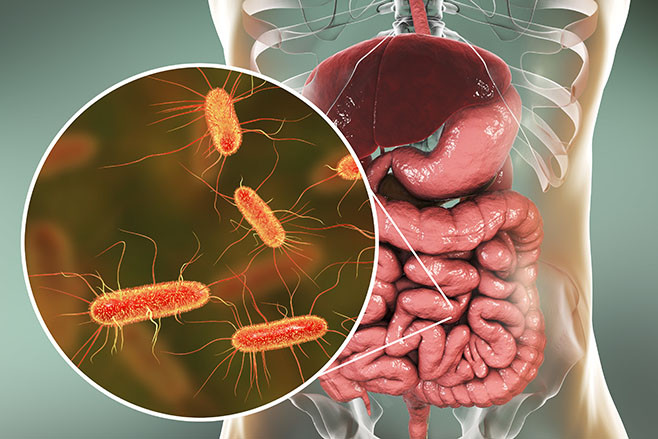
A recent CSIRO study has proven gut health and obesity go hand in hand. The gut microbiome, a complex community of microorganisms in the digestive tract, plays a crucial role in digestion and metabolism.
An imbalance in this microbiome can lead to poor digestion, inflammation, and an increase in fat storage.
Consuming a diet rich in probiotics, prebiotics, and fibre can foster a healthy gut environment, aiding in efficient digestion and reducing the propensity for belly fat accumulation.
6. Not Doing the Right Exercises 🏋️

Exercise is essential for weight loss, but not all forms are equally effective for reducing belly fat. Endurance running, while beneficial for cardiovascular health, may not target abdominal fat as effectively as high-intensity exercises like sprinting.
Sprinting promotes the release of growth hormones that stimulate fat metabolism. Incorporating sprinting and other high-intensity interval training (HIIT) exercises into your routine can enhance fat loss, especially in the abdominal region.
Do You Struggle With Stubborn BELLY FAT? What it is, Why its Bad, WHY You Do, How to Correct!
WATCH: Performance optimising & disease reversing physician Dr Sean O’Mara on how to lose belly fat
READ MORE: Exercising, Eating In A Calorie Deficit & Still Not Losing Weight? This Might Be Why
Visceral Fat Vs Subcutaneous Fat
- 🫣 Visceral Fat: Stored in the abdominal cavity – you can’t see this type of fat and it’s the most dangerous due to the fact it surrounds your internal organs.
- 🦵 Subcutaneous Fat: The fat you can see and feel that sits just under the skin all over your body.
For most people, subcutaneous fat makes up about 90% of their body fat. The remaining 10% makes up visceral fat.
| Visceral Fat | Subcutaneous Fat | |
| Location | Visceral fat is stored deep within the abdominal cavity, surrounding internal organs such as the liver, pancreas, and intestines. | Subcutaneous fat is located just under the skin and can be found all over the body, including the arms, legs, and abdomen. |
| Appearance | Unlike subcutaneous fat, visceral fat is not easily seen or felt, as it lies beneath the muscles in your abdominal wall. | This type of fat can be pinched or grabbed, making it more visible and tangible. It’s the fat you can “feel” when you squeeze your skin. |
| Health Implications | Visceral fat is often considered more harmful than subcutaneous fat. It releases fatty acids and inflammatory agents that can negatively affect the body’s metabolism, leading to insulin resistance and an increased risk of type 2 diabetes, heart disease, and certain cancers | While subcutaneous fat is generally less harmful than visceral fat, excessive amounts can still contribute to obesity and associated health risks. However, it also serves vital functions like providing insulation and cushioning for the body. |
| Reduction Strategies | Visceral fat tends to respond well to a combination of a healthy, balanced diet, regular physical exercise (especially aerobic exercises and strength training), and stress management. | Losing subcutaneous fat typically requires a focused approach on overall weight loss, including a combination of a calorie-controlled diet and regular exercise. Both cardio and strength training exercises are effective. |
The Connection Between Depression, Stress and Belly Fat
Ever wondered if belly fat has more to it than just diet? Well, it does, and emotions play a big part in it. A study by Rush University Medical Center found something quite surprising. They looked at 409 middle-aged women and discovered a link between depression and an increase in visceral fat.
Visceral fat is known to up the risk of some serious health problems like heart disease and diabetes. What makes the study even more intriguing is that the link between depression and this fat was found in all the women, whether they were active or not, and whether they were overweight or not. Race didn’t make a difference either.
So, how do depression and stress factor into this? The study suggests that being depressed and stressed might cause specific changes in our bodies that lead to this fat buildup. Even though the exact way this happens is still a bit of a mystery, the connection is clear.
What this means for you is that shedding belly fat isn’t just about what you eat or how much you exercise. Your mental well-being, especially if you’re feeling stressed or depressed, plays a significant role too. Understanding this connection can help you make choices that are just right for you, focusing on both physical and emotional health.
Strategies to Lose Belly Fat for Good
That’s an intense and targeted plan you’ve laid out! It focuses on specific strategies that could indeed make a significant impact on losing stubborn belly fat. Here’s a summary in a more professional yet friendly tone:
- Say Goodbye to Processed Food: Eliminate all processed carbs from your diet, embracing whole, healthy food choices. Focus on 100% grass-fed or game meats, and don’t shy away from liver and organs.
- Dive into Fermented Foods: Foods like kefir, kvass, kimchi, plain unsweetened yoghurt, and blue cheese aren’t just tasty; they’re great for your gut health, too!
- Fast for Autophagy: Gradually build up to extended fasting to promote autophagy, the body’s way of cleaning out damaged cells and regenerating new ones.
- Sweat it Out with Intense Exercise: Engage in maximum intensity exercises such as sprinting, weights, gym rings, and more. Push your body to its limits to maximise fat loss.
- Embrace Stress Hormesis: This strategy involves using controlled stress, such as sauna sessions, cold plunges or showers, BFR bands, altitude training, and blood donation to improve resilience and health.
- Optimise Your Body’s Functioning: Focus on your gut, skin, and oral microbiome, along with nitric oxide, oxytocin, sleep quality, sunshine exposure, vitamin D, sodium balance, mitochondria health, insulin sensitivity, melanin, autophagy, and chaperone proteins. This holistic approach aims to improve overall wellness.
Get Your Diet in Line With the Help of Ready-Made Meal Providers
Ready-made meal providers are not just about convenience; they can be your best friend in your journey to lose belly fat. By offering expertly crafted, portion-controlled meals with quality ingredients, they support your nutritional goals, taking the stress out of meal planning and preparation.
Expertly Crafted Nutrition
The best ready-made meal providers work with nutritionists and chefs to create meals that align with specific dietary needs and goals. Want to cut down on carbs or need more protein in your diet? There’s a meal plan designed just for you.
Portion Control
Portion sizes are key to weight loss, and ready-made meals take the guesswork out of it. Each meal is portioned to provide the right amount of calories, fats, proteins, and carbs to meet your goals without leaving you hungry or overfed.
Quality Ingredients
The best providers emphasise fresh, quality ingredients, such as grass-fed meats, organic produce, and no artificial additives. This aligns with the focus on whole, healthy foods that are essential for losing belly fat
Flexibility and Variety
Meal fatigue can derail the best-laid diet plans. With ready-made meals, you can choose from a diverse menu, mixing and matching different dishes to keep your taste buds happy and your diet on track.
Support for Special Diets
Following a specific diet like the paleo diet, keto diet or vegan diet? Many meal providers cater to these dietary preferences, making it easier to stick to your plan without feeling deprived.
The Top Australian Ready-Made Meal Providers for Weight Loss
Ready to Shed That Stubborn Belly Fat?
Jump-start your journey to a flatter belly with a tried-and-tested weight loss meal plan. With a whole range of dedicated weight loss meal providers in Australia to choose from, you’ll be on your way to losing that stubborn belly fat in no time at all.
Check out our list of the best meal providers for weight loss and get started today.

